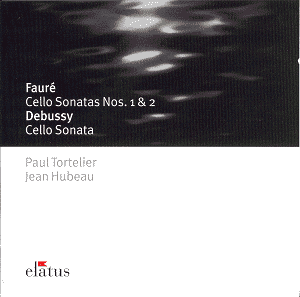On a date which must have been only a few years after the making
of this disc I was an impressionable schoolboy sitting literally at the
great manís feet (first or second row with the stage towering above me)
at a recital in what was then called Ashford High School (Kent) which
included one of the Fauré sonatas. Performers of this calibre didnít
often come to Ashford and I was quite mesmerised. Tortelier was one of
those performers you really have to see to get the full force of his magnetic
personality; his whole body seemed to communicate his love of the music
and his desire to get it across to the public. Before the performance
he delighted us with a little speech in his rapid, voluble and very French-sounding
English in which he showed us (with the pianist Geoffrey Pratleyís help)
how Fauré used the "Tristan-chord" during the sonata.
While some performers in the "you really have
to see them" category can disappoint when heard cold on disc, records
show that Tortelierís communicative abilities were grounded on a perfect
technique and a very high level of musicianship, while his passionate
commitment emerges from the loudspeakers just as clearly as it did in
the concert hall. With Jean Hubeau a fine partner it would be impossible
to imagine finer performances of this music.
Late Fauré can seem austere beside his younger
self (the much earlier Elégie obviously comes from the same delicately
perfumed plant as "Après un rêve") but in Tortelierís
hands these sonatas emerge glowing with humanity. If we remember how
some of Debussyís first piano pieces inhabit much the same world as
Fauréís, we can only marvel at how far apart the two had travelled
by the time of their late cello sonatas. Tortelier is master of the
wide range of moods which Debussyís pithy little masterpiece encompasses,
from infinite sadness to fierce exultation, and again reveals the humanity
of a work which can seem more elusive in other hands.
The only information we get about this recording is
that it was published by Erato in 1962; the Fauré pieces were
issued in Great Britain by World Record Club in 1967. Though it obviously
hasnít quite the bloom of the best 2002 products it is really very good
indeed for its age. The booklet has a good note in three languages.
An indispensable disc.
Christopher Howell

![]() Paul Tortelier (cello),
Jean Hubeau (piano)
Paul Tortelier (cello),
Jean Hubeau (piano) ![]() WARNER CLASSICS Elatus
0927-49012-2 [55í 04"]
WARNER CLASSICS Elatus
0927-49012-2 [55í 04"]